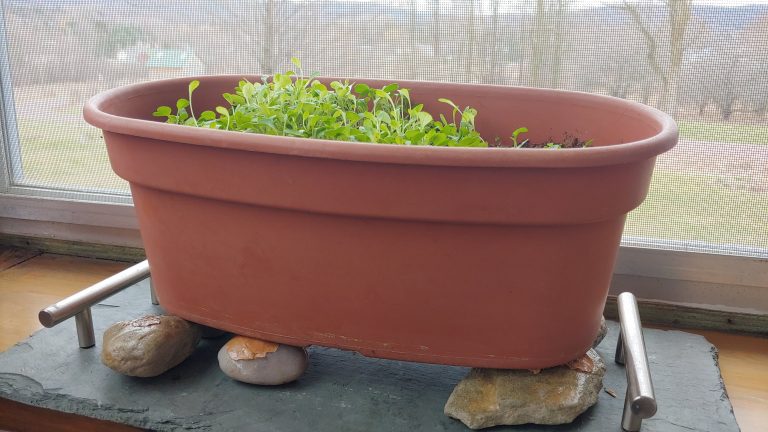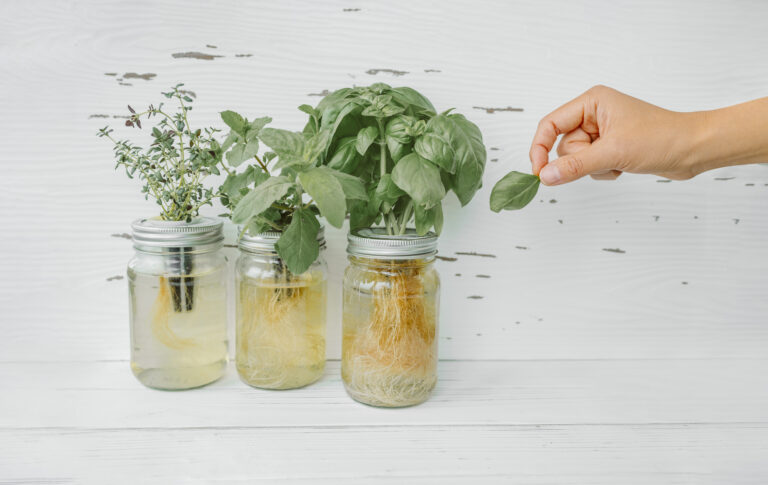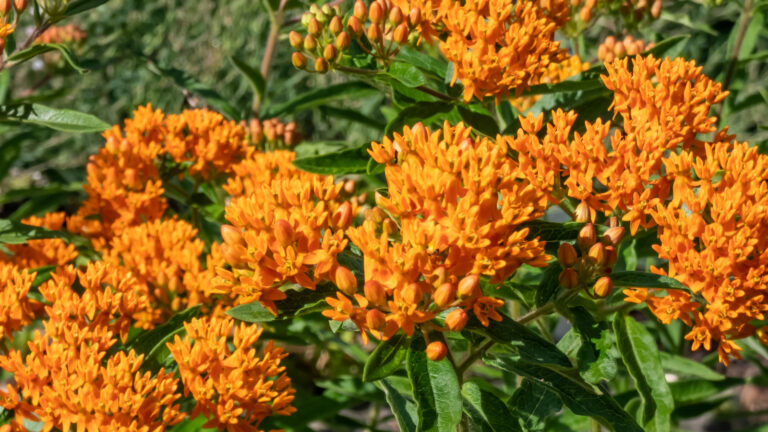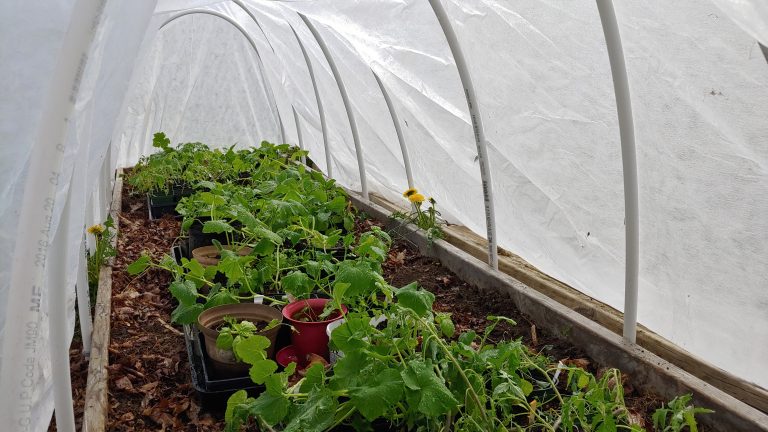This post may contain affiliate links.
Climbing plants are an excellent way to add vertical dimension to your garden. These plants are excellent for accentuating fences, trellises, and pergolas, adding both height and beauty with their stunning blooms.
Climbing plants can dramatically transform your garden into an eye-catching feature offering a unique way of ascending the structures they encounter. In addition, they can also serve practical purposes, such as concealing unsightly areas or providing privacy from neighbors.
Overall, most climbing plants offer beautiful blooms, seasonal color, and lush foliage. Here are 15 best climbing plants to consider for your garden.
Bougainvillea

Bougainvillea is a tropical plant celebrated for its lush, colorful bracts and vigorous growth. It can be grown as a vine, shrub, or ground cover. While it flourishes in full sun and requires regular watering, it’s surprisingly resilient in deterring squirrels.
Bougainvilleas are ideal visually standout vines that can transform pergolas and other structures into exotic focal points. Available in shades like bright pink, bold red, and vibrant purple, they thrive with full sun exposure, well-drained soils, and heat – growing 15–30 feet annually.
Clematis

Clematis has striking, vivid purple flowers. This perennial prefers full sunlight and requires moderate watering.
Clematis produces magnificent bounties of colorful blooms that provide stunning vertical accents. Most grow to impressive lengths of 10–20 feet.
Mandevilla

With beautiful pink, red, or white flowers that last all summer, Mandevilla thrives in full sun and requires some shade in the hottest climates. It’s a tropical vine often grown as an annual in cooler areas.
Mandevilla adds sultry color and vertical drama to garden beds, walls and pergolas. It can grow 10–20 feet annually in the right conditions.
Black Eye Susan

The vibrant yellow petals and dark centers of Black-Eyed Susans make them a striking addition to any garden. They’re a visual treat and a favorite among bees for their plentiful nectar.
This fast-growing annual vine produces abundant golden-orange flowers with dark brown centers from midsummer through fall. The blooms provide splashes of color over trellises, fences, and arbors. When grown in full sun with average soil fertility and moisture, it can reach lengths of 10 feet tall in one season.
Virginia Creeper

This fast-growing vine is great for covering up unsightly walls and is adaptable to various soil types. It grows well along trellises and fences.
Honeysuckle

An excellent choice for attracting wildlife, honeysuckle thrives in most conditions, preferring full sun and soil enriched with organic matter.
This high-climbing woody vine produces beautiful hanging clusters of brightly colored, tubular flowers in summer that attract hummingbirds and butterflies. Most varieties are hardy in zones 4-9 and can easily reach 30 feet. Some types have wonderfully sweet fragrances.
Climbing Roses

Climbing roses are classic, beautiful, blooming flowers for any garden wall or pergola. Available in a variety of colors, they’re a great way to add pops of color to your yard. This plant needs well-drained soil and plenty of sunlight.
They bloom abundantly in late spring into summer. Most climbing roses need at least 6 hours of sun and good air circulation to thrive. They can grow to 10–15 feet and work well in zones 4-9.
Sweet Pea

They are known for their potent fragrance and beautiful colors ranging from pink and white to deep blue, making them a delightful addition to any garden. Best planted in spring from seed, they flourish under full sun to partial shade and prefer cooler weather, often wilting by the hot summer months.
This climbing annual thrives in cool conditions and part shade. It grows rapidly to 6–10 feet when supported by a trellis or fence.
Moonflower

The moonflower opens its large, white, trumpet-shaped flowers at night. It is ideal for moon gardens, where its fragrance intensifies after dark.
This annual vine grows rapidly to 15 feet in zones 10-11. It can come back year after year as a perennial in warmer zones. Give it full sun and fertile, well-drained soil.
Wisteria

With its stunning drapes of lilac-blue flowers, Wisteria is a fast-growing vine that requires significant support and patience as it takes years to establish.
Jasmine

Jasmine’s star-shaped flowers fill the garden with their sweet fragrance for months. This rapidly growing vine is perfect for covering walls or fences or can be trimmed into a fragrant hedge.
It grows quickly up to 20 feet, tolerating heat and partial shade. Star jasmine thrives in zones 8-10.
Climbing Hydrangea

Climbing Hydrangea loves the shade and boasts creamy white flowers throughout the summer. Its heavy vines need sturdy support and grow slowly, requiring patience as it establishes.
It can grow up to 40 feet, making it ideal for multi-story houses. Hardy in zones 4-8.
Climbing Azaleas

Growing climbing azaleas involves training these plants to climb. Azaleas are known for their vibrant spring blooms and, in some varieties, foliage that remains attractive year-round.
They thrive in slightly acidic, well-drained soil and are suitable for sunny and partially shaded areas. The soil should be rich and well-drained for growth. These climbers are hardy in zones 5 to 9, accommodating a range of climates from warm to cold.
Morning Glory

True to its name, Morning Glory blooms open in the morning sun. This pretty vine is an excellent choice for climbing on fences and trellises.
A classic fast-growing annual, the morning glory vine boasts a spectrum of cheerful flower colors, including vibrant blue, red, pink, and white. It thrives with full sun exposure and can quickly climb 10–20 feet using twisting tendrils.
Boston Ivy

Boston ivy is a rapidly growing vine. Plant it in moist, well-drained soil, and it can thrive in full sun or shade.
This iconic ivy cultivar is known for its excellent adherence and ability to climb walls. It is the signature covering on Fenway Park’s historic Green Monster wall in Boston. It has rich green foliage in summer that turns bright shades of red and orange come fall. When established, Boston Ivy can reach 40–50 feet over time.
Trumpet Vine
With its vivid, trumpet-shaped orange blooms in summer, this fast-growing climber adds tropical flair. It needs full sun exposure and well-drained soil.
The trumpet vine is an aggressive spreader that can reach 15-20 feet wide. It grows in zones 4-9 and attracts hummingbirds. Use caution where spreading is undesired.
Carrion Flower
Named for its bizarre rotten-meat fragrance, this unusual annual vine produces unique maroon and yellow blooms that attract pollinators like carrion beetles and flesh flies. It can grow quickly in one season and reach 6–12 feet long.
Common Grape
For edible landscaping, fast-growing grapevines yield abundant bunches of sweet fruit in late summer and fall once they mature. When trellised or arbored over other structures, the vines can reach 30 feet long. Grapevines need plenty of sun and irrigation to thrive and produce.
English (David Austin) Rose Carding Mill
Bred for beauty and fragrance, this repeat-blooming English climbing rose dazzles with large, glowing apricot-orange blooms from early summer into fall. It has a light fruity rose scent and reaches lengths of 10 feet tall when supported on fences or structures.
Passionflower
This exotic, heat-loving flowering vine shows off wildly intricate blooms resembling artistic renditions of religious icons and medallions. They bloom from summer into fall, later producing egg-shaped edible fruits. Passionflower grows vigorously, reaching 25-30 foot lengths in zones 5-9 when trellised. It requires plenty of sun exposure and well-drained soil to thrive.
How to Outsmart Gnats to Keep Them Away From Your Houseplants
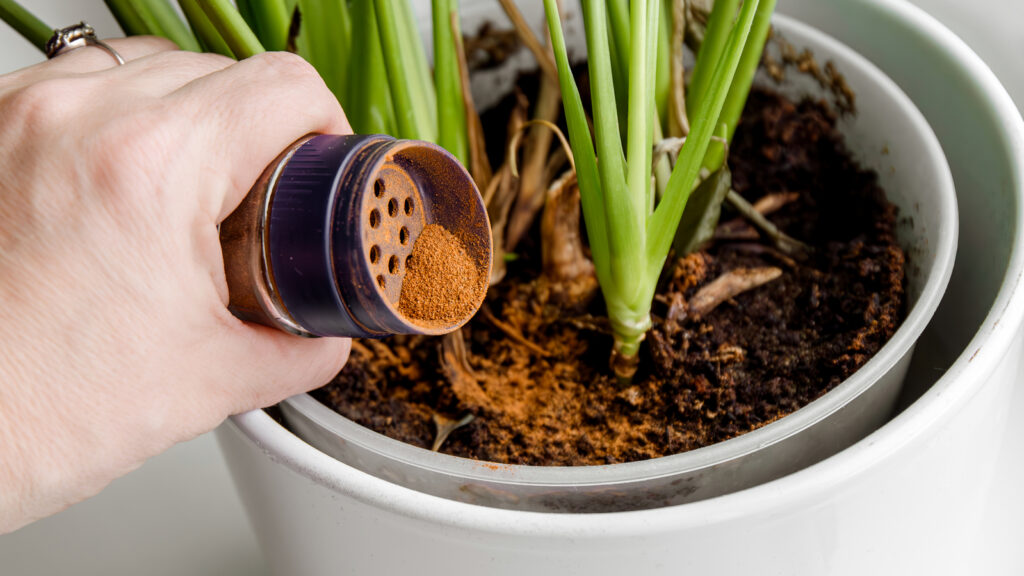
Gnats are more than just a minor annoyance; these tiny pests buzz around with a persistence that’s hard to ignore. Here are ten effective ways to keep gnats away from your house plants.
How to Outsmart Gnats to Keep Them Away From Your Houseplants
How to Start a Herb Garden from Scratch

Growing something as simple as our own herbs is a massive step towards sustainability. You can begin the process in a small space in the kitchen or backyard with some of your favorite herbs. Here are some simple but practical steps to get you started on your own herb garden.
How to Start a Herb Garden from Scratch
Plants to Grow Now for a Mosquito-Free Summer
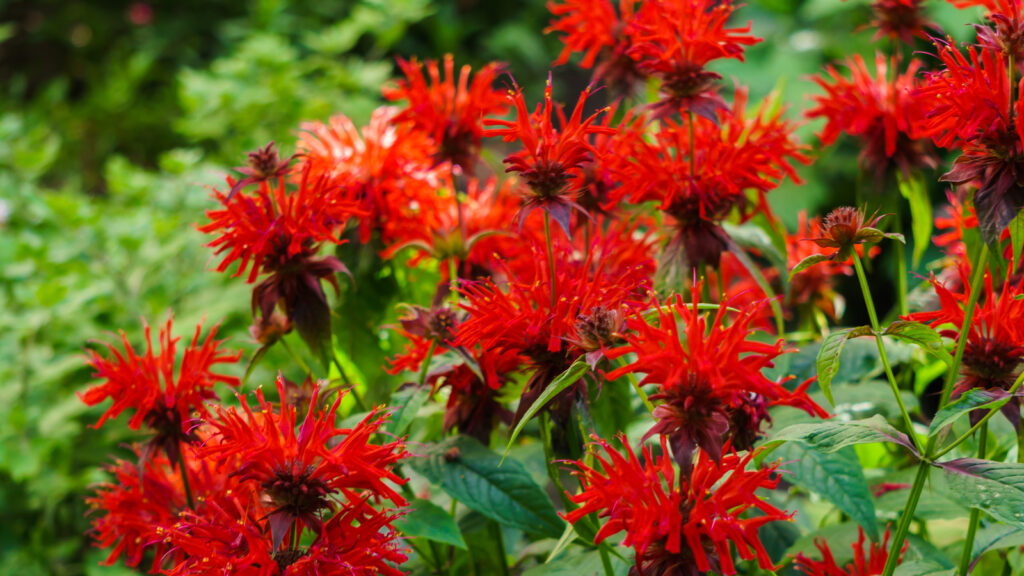
Here are some of the best plants you can grow in your yard to help keep the mosquitoes at bay.
